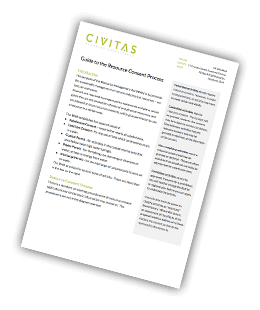Auckland Development Contributions – Big Increases on the Way
By Iain McManus
Auckland Council is poised to propose significant increases in development contributions in parts of the region.
Council is caught between a rock and a hard place when funding infrastructure – unable to significantly increase debt without risking a downgrade in its credit rating and reluctant to significantly increase rates due to the risk of a voter backlash but needing to fund the infrastructure required to support an extra 260,000 Aucklanders over the next 10 years.
Initial briefings on the Council’s draft (not-yet-public) development contributions policy indicate that the Council will undertake a rolling review of the contributions payable in the various parts of Auckland with an initial focus on the Government’s Auckland Housing Programme areas (where most of the Council's investment in infrastructure will be focused over the next 10 years) and a subsequent extension to other parts of Auckland.
This represents a departure from Council’s traditional approach of re-setting development contributions across the whole of Auckland at the same time but is preferred by officers due to the amount of work required to calculate the costs of growth across the whole of Auckland and the desire to get some contribution increases in place before the calculations for the whole of the region have been completed.
Implications for Developers
If adopted as signalled, the policy will see some areas hit with big contribution increases early in 2022. This may include the Tamaki redevelopment area (Glen Innes, Pt England, Panmure), Northwest (Kumeu-Huapai, Riverhead, Redhills), Oranga, Northcote, Mt Roskill and Drury.
Other areas will initially experience smaller changes with much bigger increases to follow in years to come as the Council completes the calculations for those areas and adopts changes to the development contributions policy.
Interestingly, this may leave some areas currently attractive for private sector development unaffected by the scale of increase proposed for other areas that are less attractive to the private sector. At least, initially.
Likewise, it may leave development contributions relatively low in some areas soon to be up-zoned in response to the NPS-UD but for
which no cost of growth calculations have been undertaken yet. At least, initially.
Clearly, the creation of much more substantial differences in the level of development contribution required in different parts of Auckland will increase the need for developers to account for development contributions when testing the feasibility of land purchases.
Implications for Auckland
It will be interesting to see the impact of the new contributions on development across Auckland.
Will this change the overall pattern of redevelopment as private sector developers focus on areas with relatively low contribution levels, where they might otherwise have redeveloped the private sector stock within the Government’s Auckland Housing Programme areas?
Likewise, if this results in an increase in development in areas with relatively low contribution levels, where the Council has not yet budgeted for significant infrastructure investment, will we see an increase in the number of areas where the Unitary Plan provides for intensification but Council refuses to grant resource consent due to a lack of infrastructure?
Similarly, what will substantial increases in development contribution levels do to the cost of housing and/or the feasibility of development? Council officers insist that the proposed development contribution increases, however substantial, will not push up the cost of housing (or other development). In their view, developers will respond by paying less for development land, thereby off-setting the additional cost of the higher contributions. However, there will be many developers who have already purchased their development land for the next couple of years and who therefore do not have the opportunity to pay less for their land.
Other Changes being Considered
Initial briefings indicate that other changes being considered by Council include:
- An extension of the development contribution policy time horizon from 10 years to either 15 or 20 years to allow Council to start charging earlier for infrastructure needed more than 10 years from now; and
- Changing the timing of payment of development contributions, to require some parties to pay sooner than now.
The former seems likely to increase costs to today’s developers while potentially reducing costs to future developers, while the latter will require developers to fund development contributions earlier which will also add cost to developments.
Current Timeline
At this stage, Council officers are proposing the following timeline for adoption of the new development contributions policy:
8 September 2021
Council’s Finance and Performance Committee finalises draft policy for consultation.
16 September 2021
Full Council adopts draft policy for consultation.
20 September to 17 October 2021
Public consultation.
3 November 2021
Finance and Performance Committee workshop to consider submissions.
1 December 2021
Finance and Performance Committee workshop to adopt final policy.
9 December 2021
Full Council to adopt final policy.
January 2022
New policy in place.
So, pencil in 20 September for a first look at the new development contributions policy.
Feel free to get in touch if you would like to discuss any of the above.

